In the arrangement shown in the fig, end A of the string is being pulled with a constant horizontal velocity of 6m/s. The block is free to slide on the horizontal surface and all string segments are horizontal. Find the velocity of point P on the thread.

The correct Answer is:2m/s
Step by step video, text & image solution for In the arrangement shown in the fig, end A of the string is being pulled with a constant horizontal velocity of 6 m//s. The block is free to slide on the horizontal surface and all string segments are horizontal. Find the velocity of point P on the thread. by Physics experts to help you in doubts & scoring excellent marks in Class 11 exams.
Topper's Solved these Questions
- BOOK - ARIHANTCHAPTER - KINEMATICSEXERCISE - Level 258videos
KINEMATICS
- BOOK - ARIHANTCHAPTER - KINEMATICSEXERCISE - Level 333videos
KINEMATICS
- BOOK - ARIHANTCHAPTER - HEAT TRANSFEREXERCISE - Heat Transfer45videos
HEAT TRANSFER
- BOOK - ARIHANTCHAPTER - KINETIC THEORY OF GASESEXERCISE - Level 34videos
KINETIC THEORY OF GASES
Similar Questions
In the Fig. the blocks 'A' and 'B' are connected with an inextensible string. The block 'A' can slide on a smooth horizontal surface.
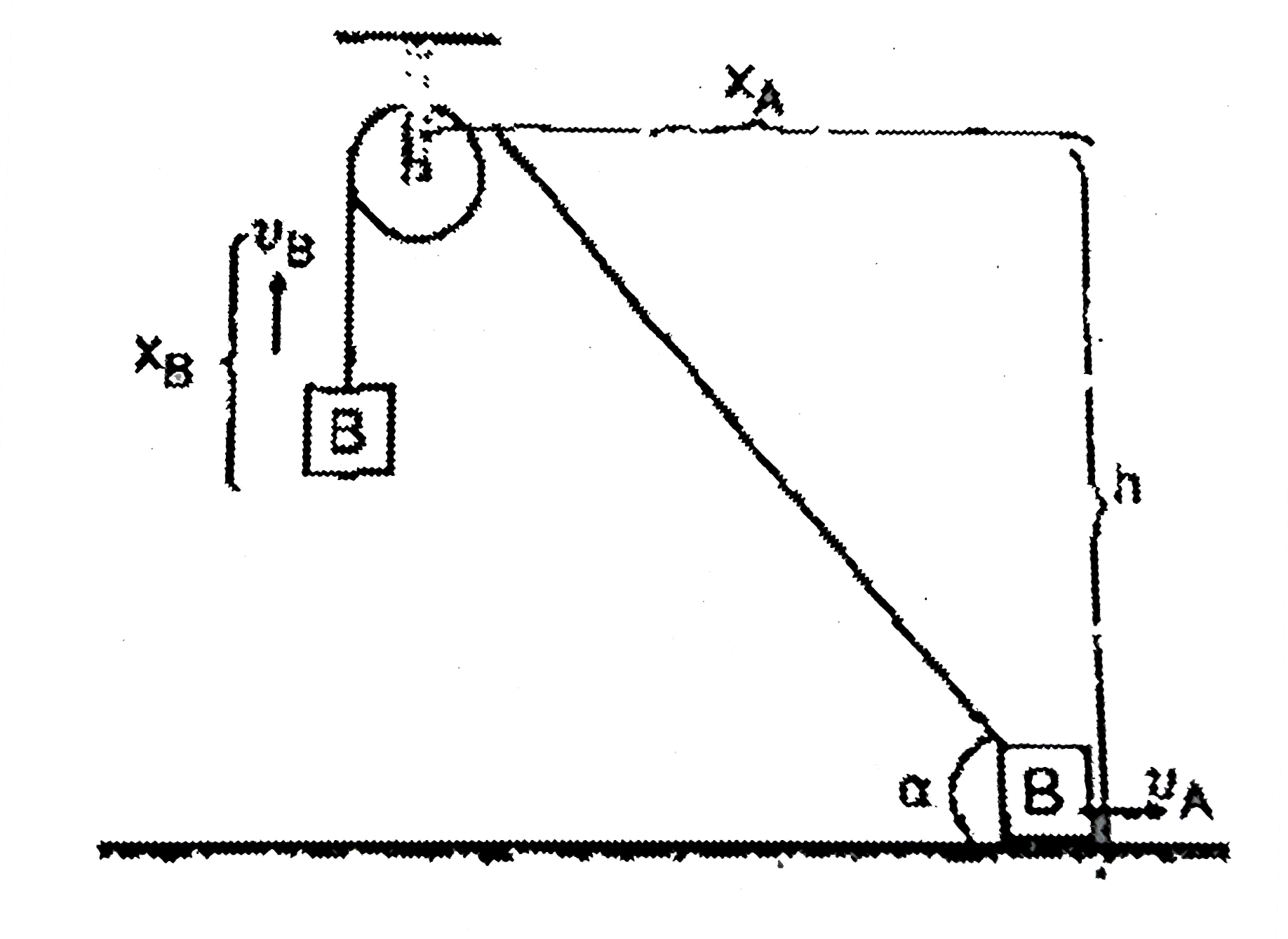 View Solution
View SolutionBlock 5 shown in figure moves to the right with a constant velocity of 30 cm/s. Find :

(a) The velocity of block A.
(b) The velocity of the point P of the string.
(c) The velocity of the point M of the string.
(d) The relative velocity of the point P of the string with respect to the block A.View Solution
Knowledge Check
- Question 1 - Select One
In the arrangement shown, end A of light intextensible string is pulled with constant velocity v. the velocity of block B is
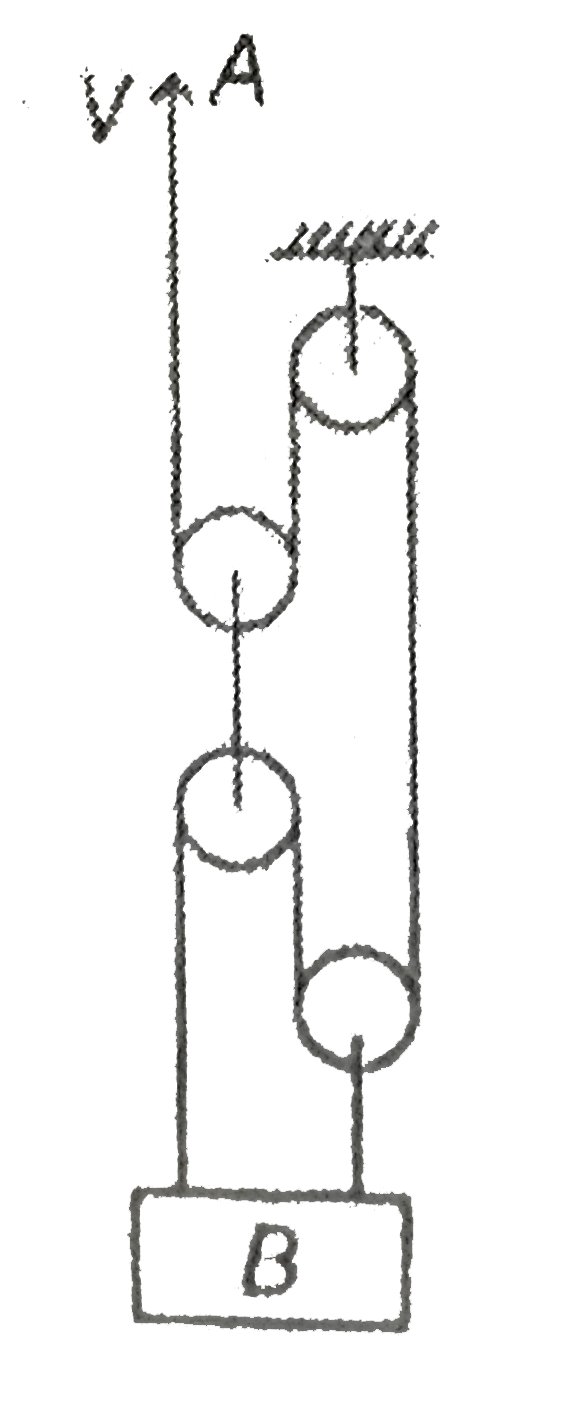 AV/2BvCv/3D3v
AV/2BvCv/3D3v - Question 2 - Select One
Find out velocity of point P which is present on a disc rolling on horizontal surface as shown.
 Av0Bv0√3Cv02D3v02
Av0Bv0√3Cv02D3v02 - Question 3 - Select One
In the arrangement shown in figure, m_A = m_B = 2kg. String is massless and pulley is frictionless. Block B is resting on a smooth horizontal surface, while friction coefficient beteen block A and B is μ=0.5 . the Maximum horizontal force F that can be applied so that block A does not slip over block B is.
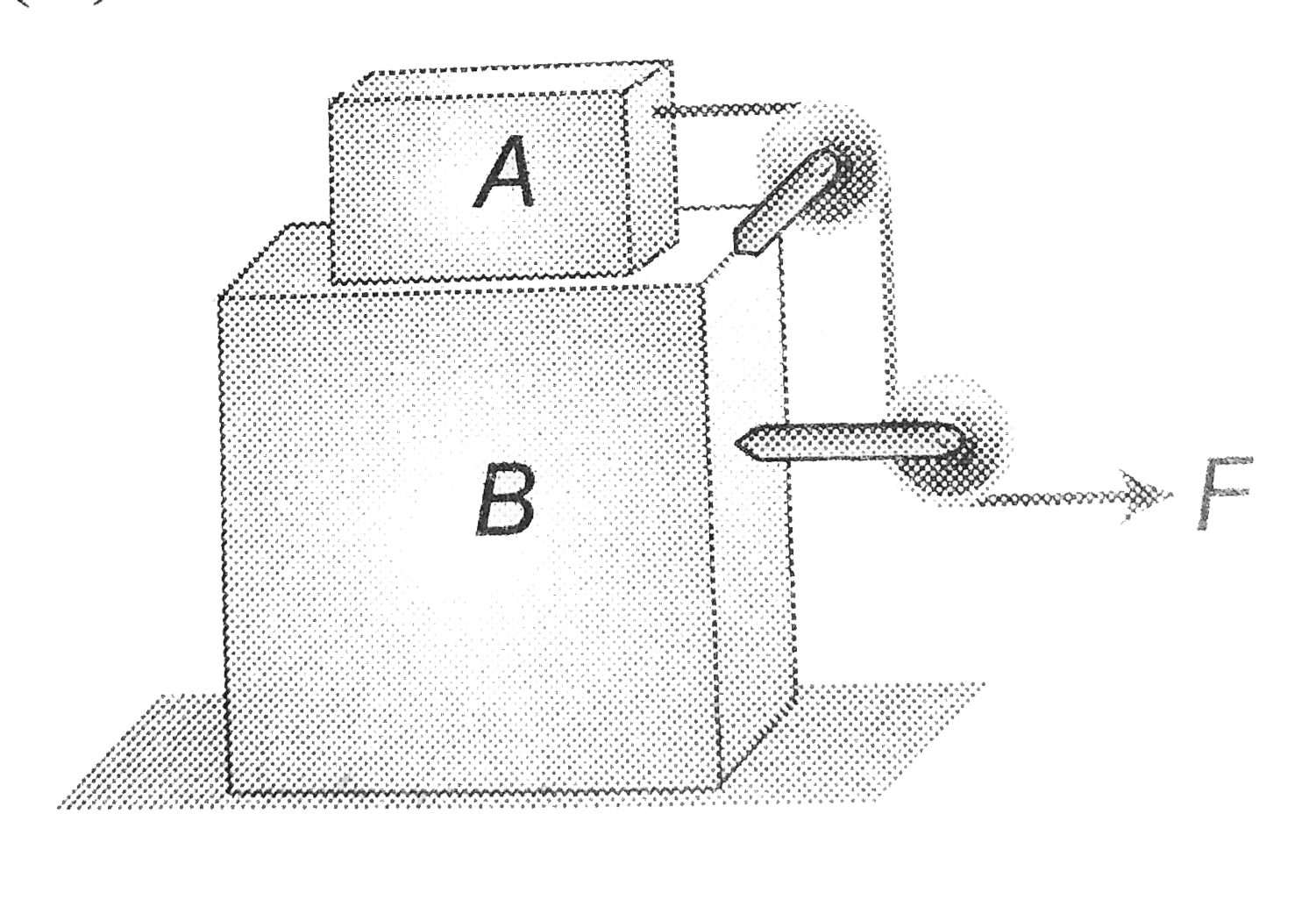 A25NB40NC30ND20N
A25NB40NC30ND20N
Two blocks A and B are shown in figure. Block A moves to the left with a constant velocity of 6m/s. Find :
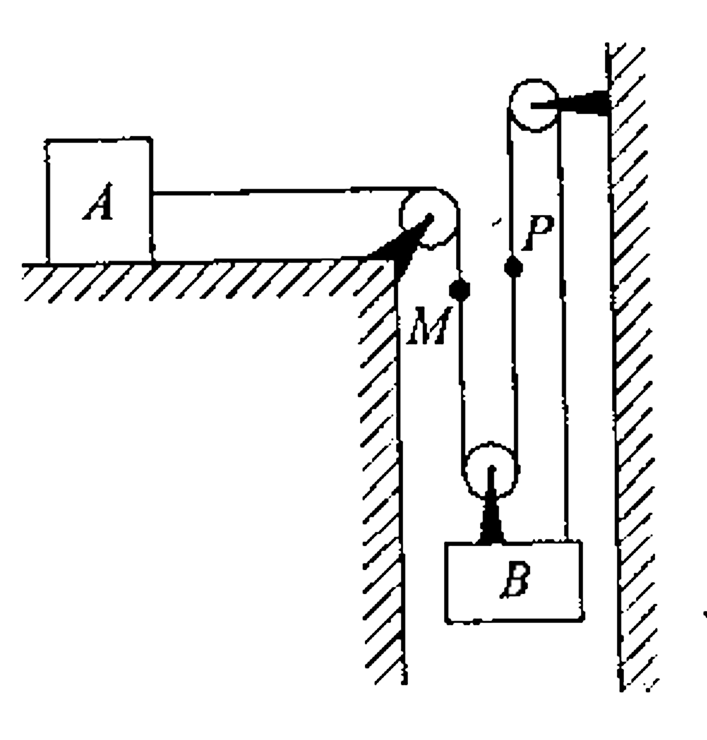
(a) Velocity of the blocks B.
(b) Velocity of the point P of the string.
Relative velocity of the point M of the cable with respect to the point P.View SolutionThe blocks are in equilibrium with a constant horizontal force 2mg acting on block B. The strings are light, find tensions in the strings and values of angles α and β
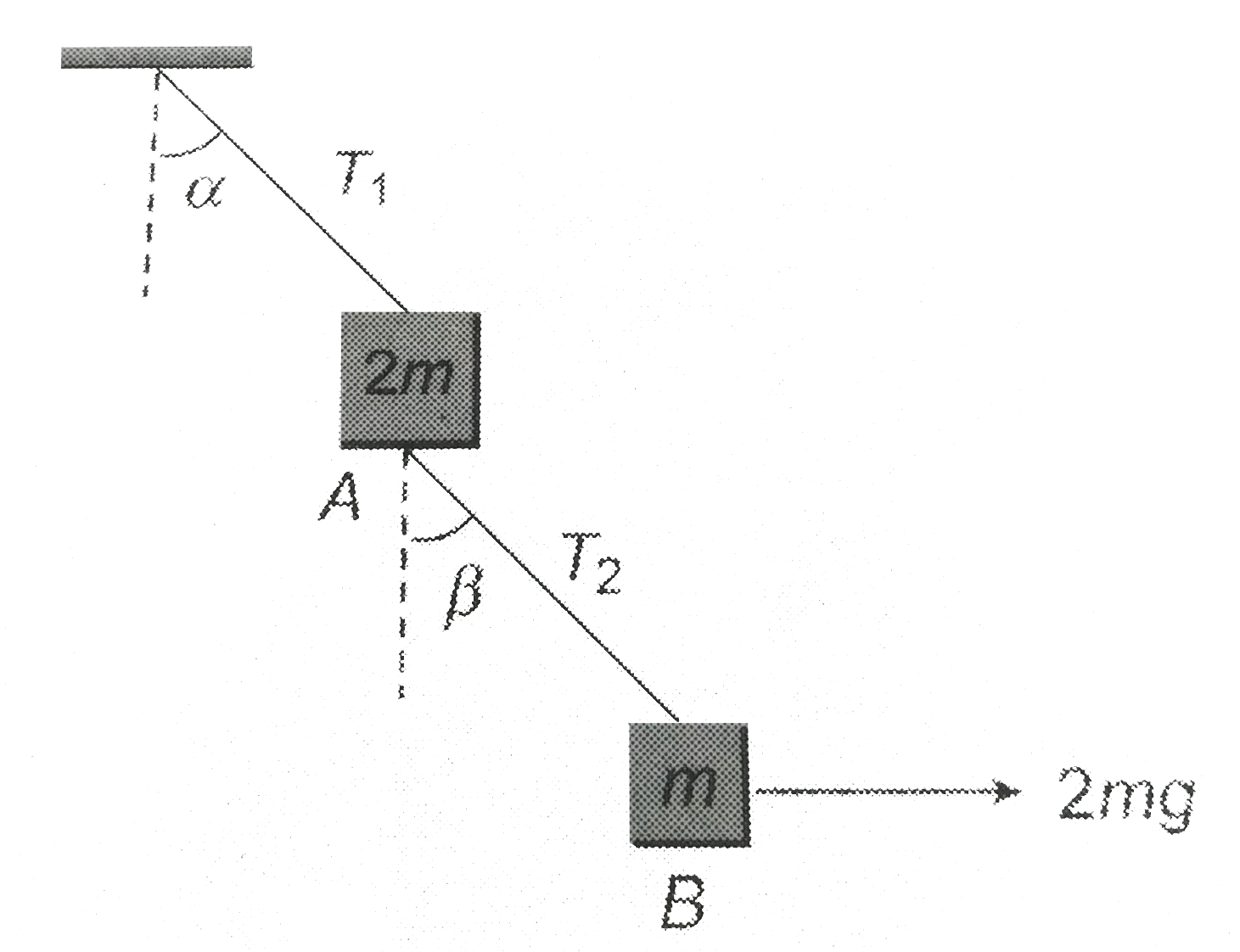 View Solution
View SolutionThe block A is moving downward with constant velocity v0. Find the velocity of the block B. When the string makes an angle θ with the horizontal
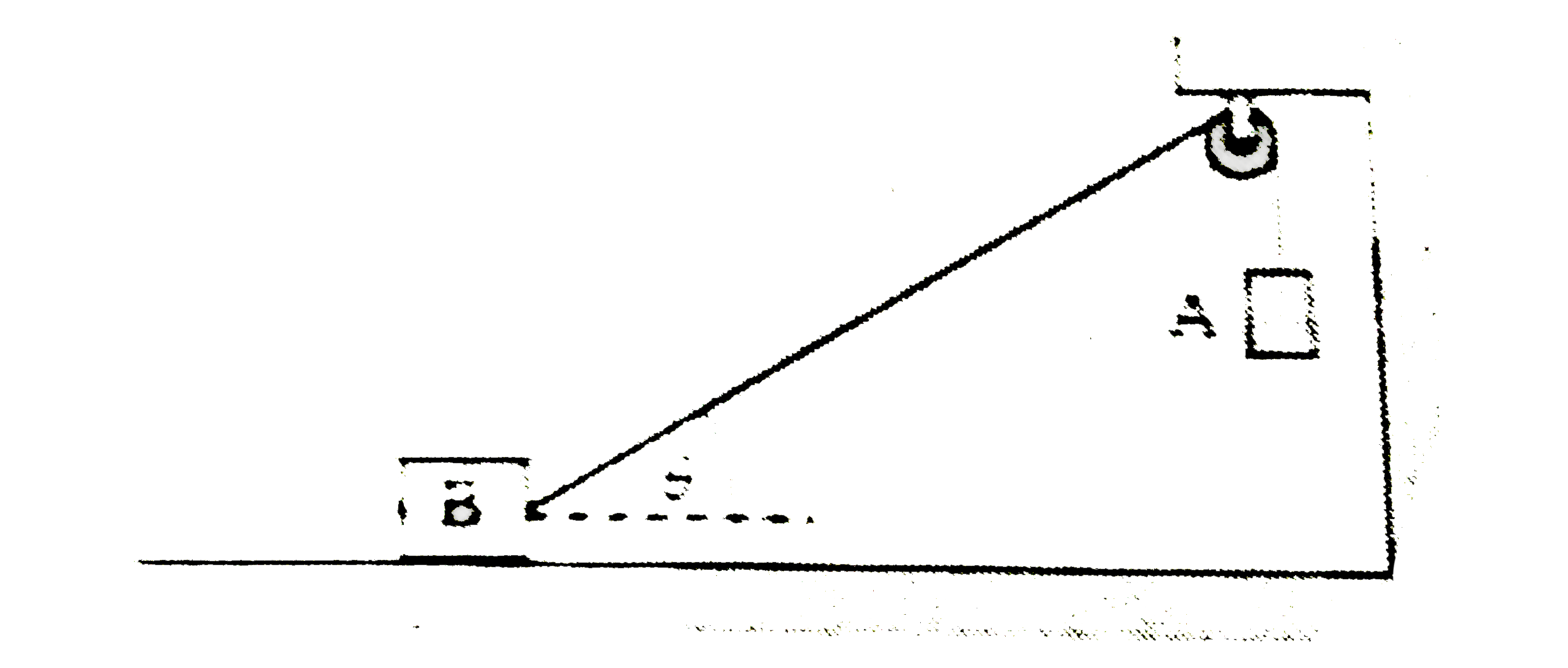 View Solution
View SolutionIn the arrangement shown in the fig, block A is pulled so that it moves horizontally along the line AX with constant velocity u. Block B moves along the incline. Find the time taken by B to reach the pulley P if u=1m/s. The string is inextensible.
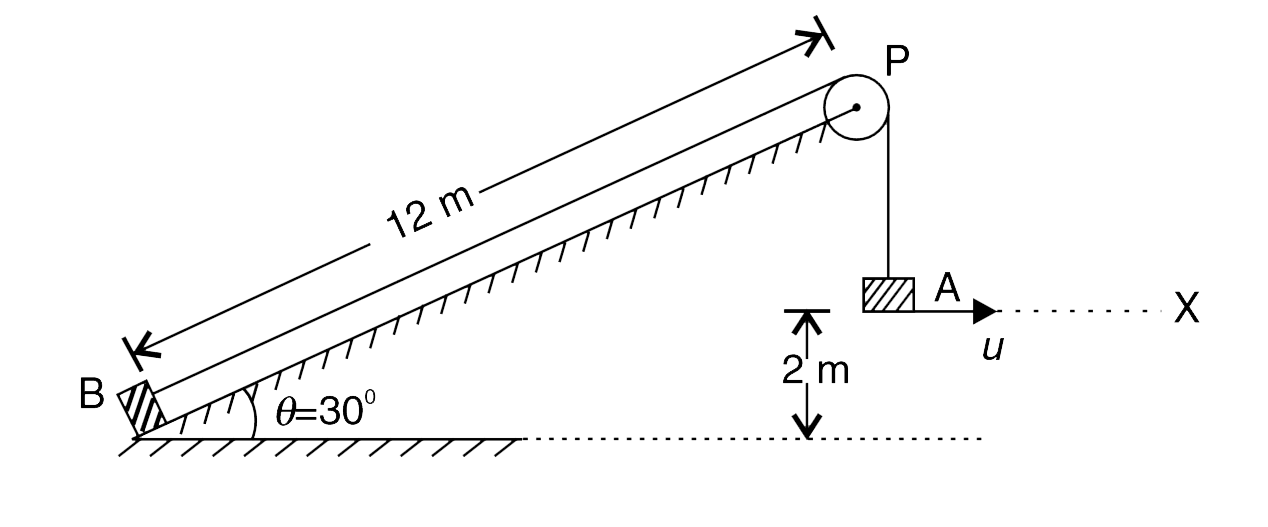 View Solution
View SolutionIn each of the three arrangements, the block of mass m1 is being pulled left with constant velocity. There is no friction anywhere. The string are light and anextensible and pulleys are massless. The ratio of the speed of the block of mass m2 in the three cases respectively is:
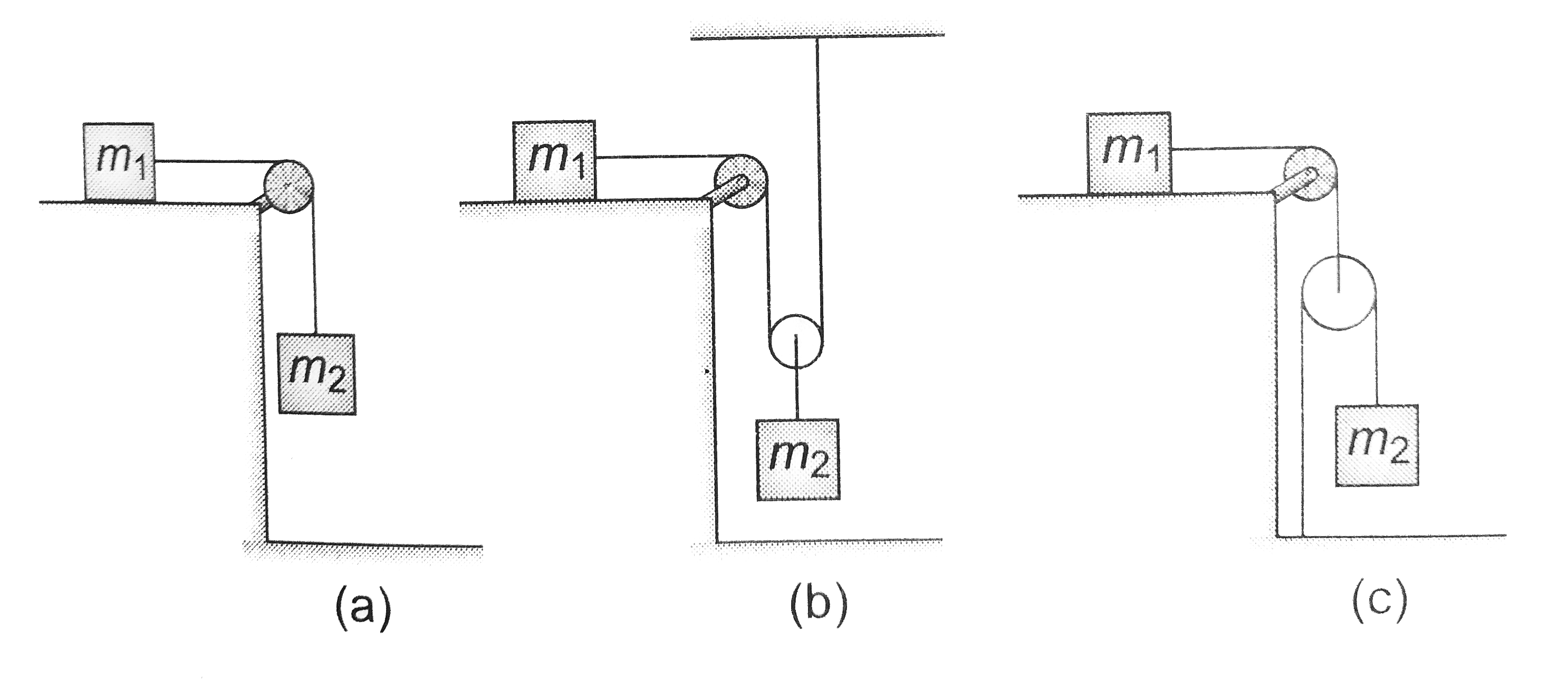 View Solution
View Solution

